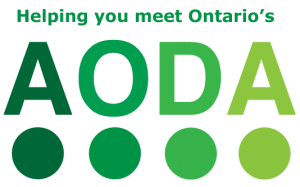CONTENTS
- The assistive technology (AT) assessment process – provides practical information to frame AT assessment process and cites some interesting references on the subject
- Legal considerations and assistive technology (AT) – guides you through the legal considerations related to AT in the educational setting in Canada.
- Individual Education Plans (IEP) and assistive technology (AT)– clarifies the place of AT in the individual education plan (IEP)
Introduction
The use of technology in teaching and learning is an important tool for many students, parents, teachers, and administrators. Assistive technology (AT), a term for technologies that support a student’s learning differences, often includes both assistive technologies and accessible technologies. Students may use assistive technologies such as a refreshable braille display and technologies that have accessibility settings built in, such as voice over on an iPad.
Assessing how a student might leverage assistive and accessible technology is an important process that should be repeated at least every year if not multiple times over a given year. Classroom observation, parental or guardian input, and student feedback can help identify solutions to improve communication of concepts or output challenges, for example. Formal assessments with external or school-assigned occupational therapists and technologists can lead to a SEA (pronounced See-ah) claim (Special Equipment Amount) for funded student-specific technologies. A SEA claim can be the result of the formalized Individual Education Plan (IEP).
The SEA funding is defined by the Ontario Ministry of Education as: “The Special Equipment Amount (SEA) provides funding to school boards to assist with the costs of equipment essential to support students with special education needs where the need for specific equipment is recommended by a qualified professional. This equipment is to provide students with accommodations that are directly required and essential to access the Ontario curriculum and/or a board determined alternative program and/or course and/or to attend school.” source: http://www.edu.gov.on.ca/eng/funding/1718/2017_18_sea_guidelines_en.pdf
Check with your school or school board to learn more about funding for technology. There may be funds available at times for technologies that can benefit a number of students. Technologies such as smart boards, tablets and laptops are technologies that, when used to their greatest potential, can broaden access to curriculum and possibly eliminate the need for person-specific assistive technology claims. –Hajer Chalghoumi and Caren Watkins
How It Relates to the AODA legislation:
The Assistive Technology Assessment relates to the following sections of the Accessibility for Ontarians with Disabilities Act (AODA) Integrated Accessibility Standards, specifically some of the following sections in the Information and Communication Standards:
Additional resources for training can be found on AccessForward’s website under Training Modules and Additional Training Resources, for example Training on Accessible Course Delivery and Instruction.
AODA Significance:
- The Assistive Technology Assessment section describes how educators can utilize inclusive technologies to develop and guide learning plans with and for students to enhance their individual educational needs and goals (IEPs, Accommodations).
- People interact, learn, and communicate in diverse ways. Learning opportunities are increased when flexible ways of engaging with learning materials are provided. Considering how people communicate is important for knowledge to be exchanged. Alternative formats take into account diverse ways of exchanging information.
- The AODA legislates that educators, teachers and staff learn about accessible course delivery, instruction and evaluation (assessment) and be knowledgeable at interacting and communicating with people with disabilities who may use alternative formats.
Additional Resources
To learn how this section relates to the core principles of the AODA Customer Service regulation, visit the AODA page on SNOW.
To learn of ways to innovate, develop, and design for accessibility, visit OCAD University’s Inclusive Design Research Centre (IDRC) website and the IDRC’s floe project website.
